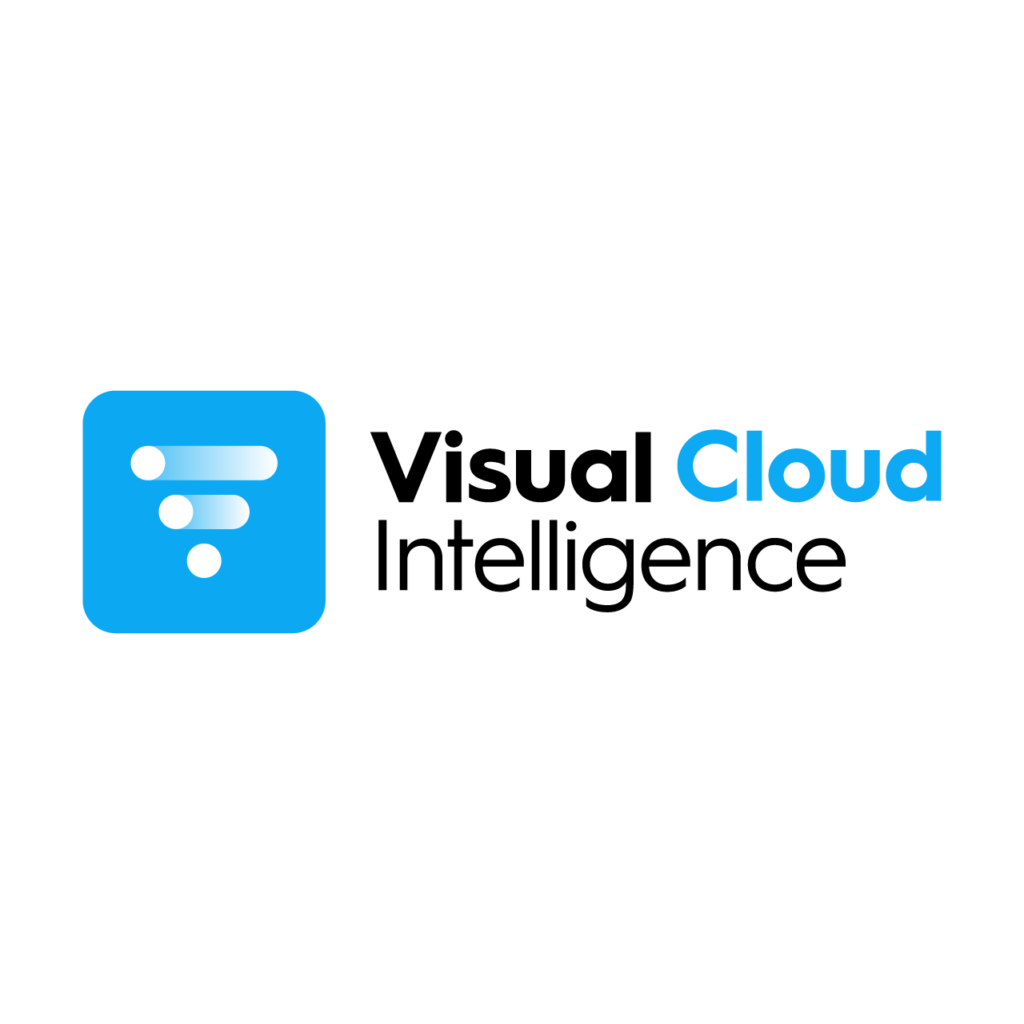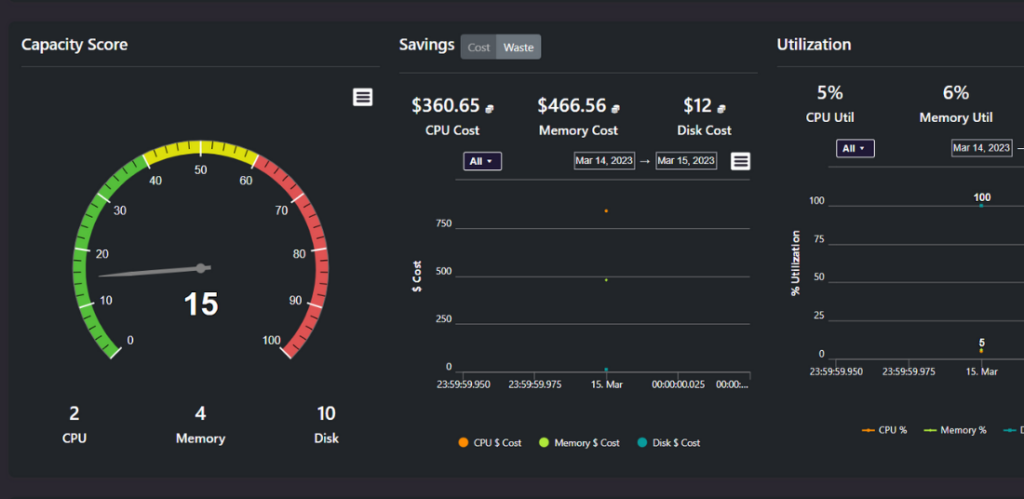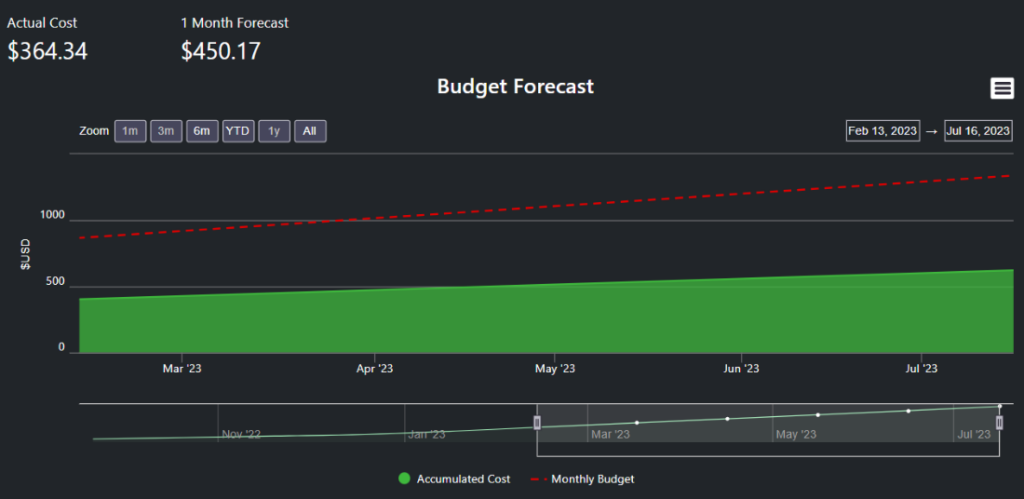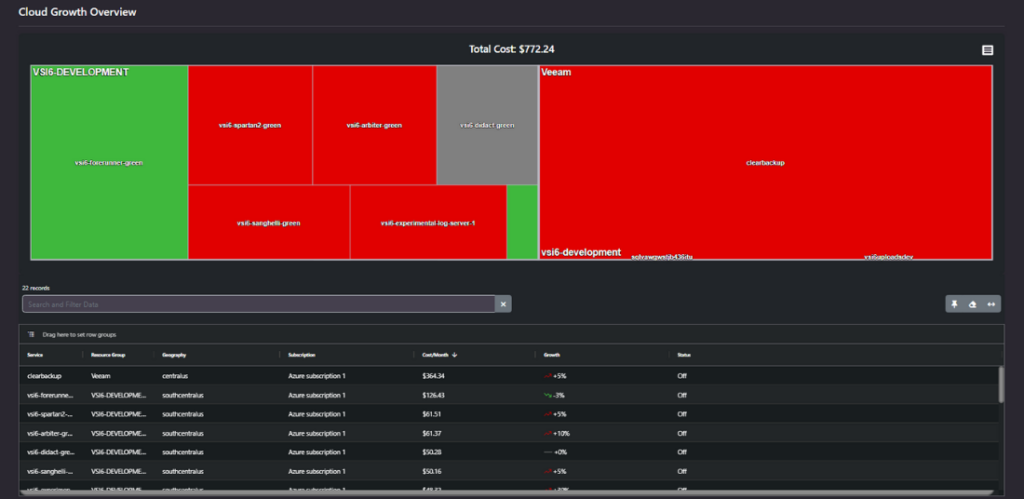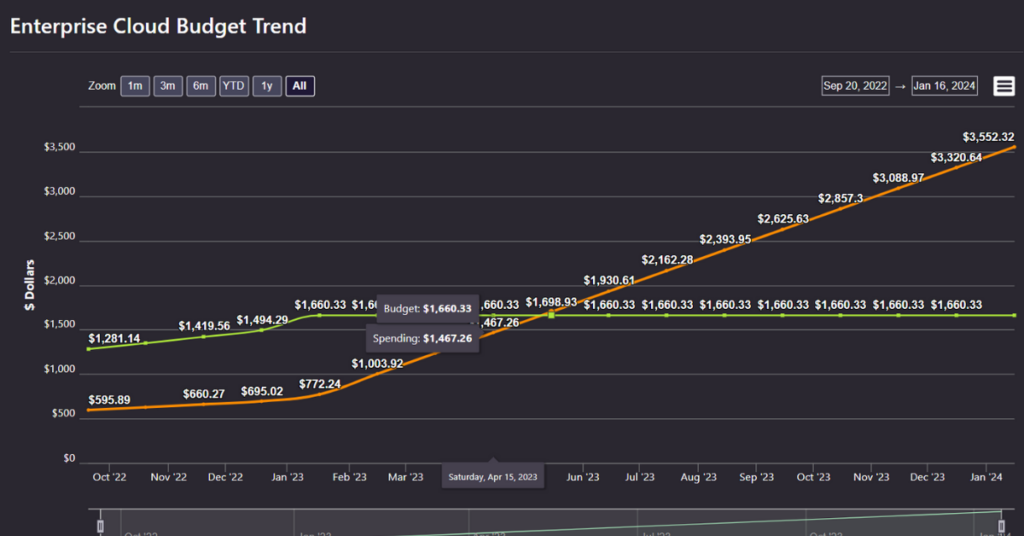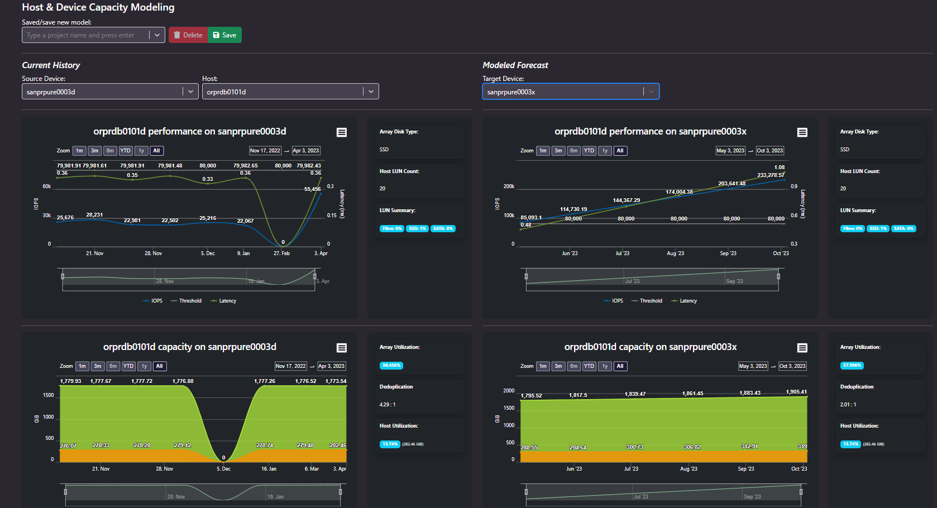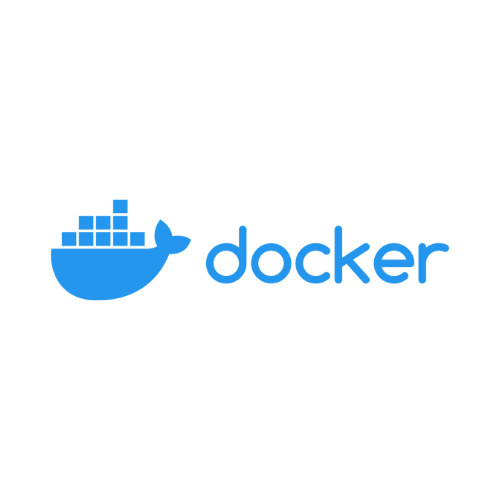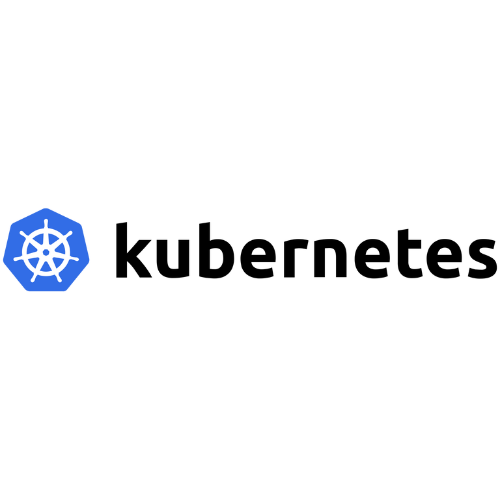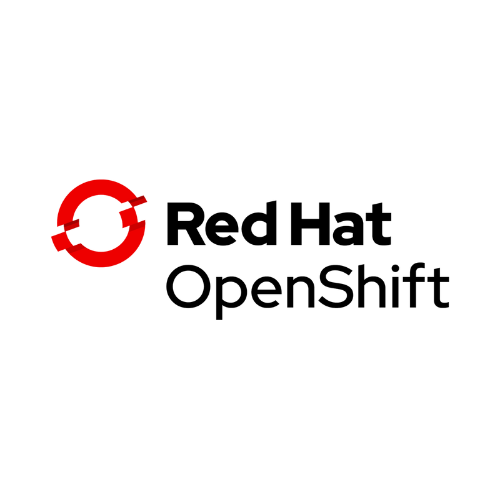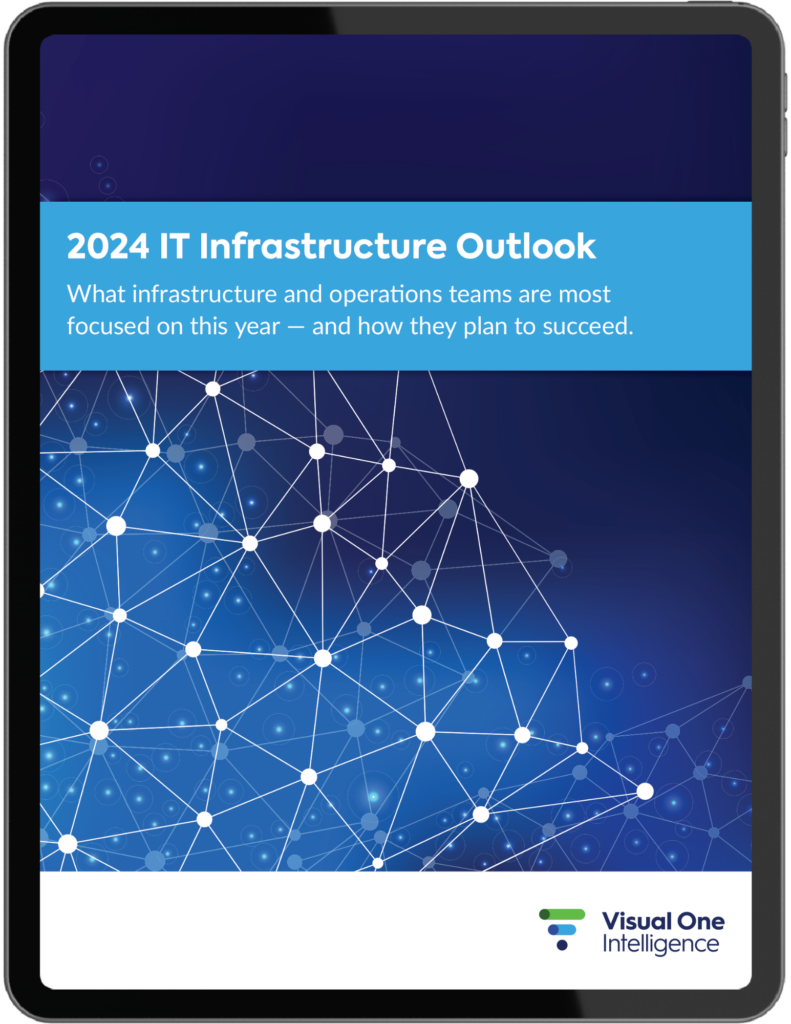
Cut Cloud Waste by 10%: Visual One Intelligence’s™ cloud cost monitoring & optimization provides the usage, cost, and forecasting data you need to maintain cost-effective cloud environments with no surprises.

Cloud Cost Monitoring & Optimization Tool
We integrate cloud cost & performance optimization with the rest of your infrastructure monitoring, making it easier to prevent waste, prepare for growth, and maintain maximum value from your cloud and infrastructure investments.
The result? Fewer budget surprises, leaner cloud contracts, and stronger cloud ROI.
-
Maximize ROI
-
Stop Overspending
-
Avoid Cost Overruns
-
Minimize Contract Growth
-
Migrate Seamlessly
Maximize Cloud ROI
The whole point of cloud migration is to save money. So why are so many organizations spending more in the cloud?
We show how much any given resource costs you and compare it to the cost of moving to a different cloud or storage provider & tier. Then you can use our cost analyses, spending heat maps, and workload optimization AI to see how to make your architecture as efficient as possible.
Stop Overspending in the Cloud
Tired of emergency capacity increases that blow up your cloud budget? What about SLAs that get suspiciously costlier each renewal cycle?
Cloud forecasting tracks growth and anticipates future spending, predict when you will (and won’t) need more space, alerts you to sudden utilization increases, and arms you with the knowledge you need to optimize contract terms.
No More Bloated Contracts
With cloud costs consuming an outsized proportion of IT budgets, yearly renewals can be make-or-break moments for any hope of realizing savings.
Visual One provides utilization and budget forecasting – plus allocation recommendations for optimized tiering- so you can accurately predict how much cloud capacity you’ll need (and how much you won’t.)
Optimize Your Cloud Journey
Move the right data to the right place with forecasting and planning tools.
Guarantee savings by running cost analyses on each workload and comparing costs across platforms and providers.
Why Should I Use Visual One Intelligence® in My Cloud Environment?
-
Rightsize Cloud Contracts
-
Simplify Migrations
-
Meet FinOps Goals
-
Cut Cloud Costs
Cloud growth is inevitable (after all, storage is always growing) – but most companies face yearly cloud contract increases that are much more expensive than they need to be.
Why? These contracts typically add much more capacity than organizations need (and without volume discounts that organizations could achieve).
But with Visual One’s capacity planning and modeling tools, hybrid infrastructure teams can enter yearly negotiations with the data and action items they need to obtain the best rates possible.
With so many infrastructure platforms – including VMware, multiple cloud vendors, and containers – it can be hard to know when migrating a workload or resource will actually save money. Should I keep the workload where it is? If not, where should I move it to? And how much money will I save?
Visual One provides cross-platform modeling and forecasts to answer all these questions and more, so you can plan migrations that maximize savings.
“Reducing waste and unused resources” is the biggest priority for cloud and hybrid FinOps professionals according to the FinOps Foundation.
As cloud investment grows, reducing unit costs is essential for realizing long-term savings (and stopping the bleeding in your budget). That’s where Visual One comes in, providing targeted insights that help achieve volume-based discounts, allocation rightsizing, superior forecasting, and more FinOps goals.
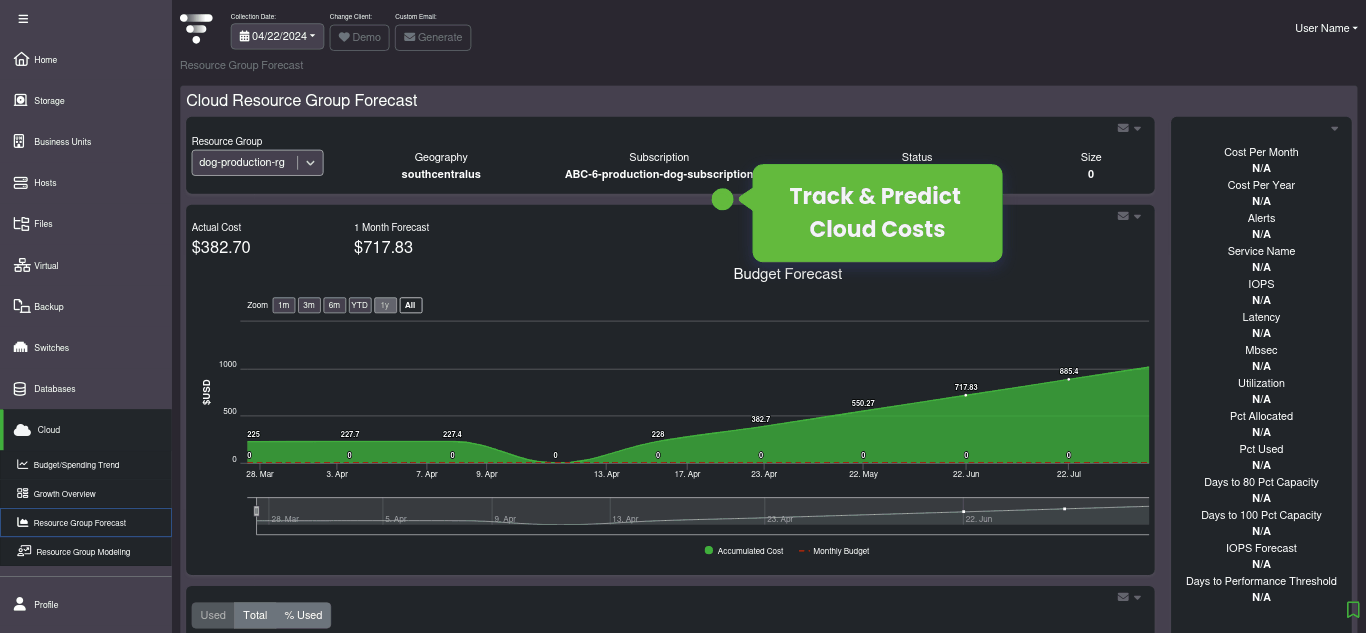
If your cloud spending feels like a leaky pipe, you’re not alone. A recent survey showed cloud spending surpassing cybersecurity as the biggest cloud challenge for enterprises – the first time in over ten years that cybersecurity was not the top challenge.
Visual One makes it easy to reign in cloud spending in hybrid cloud environments – while also consolidating tools. Instead of needing new tools for your cloud optimization, Visual One fits seamlessly into your storage, virtualized, and cloud environments for observability across your entire infrastructure.
Cloud Cost Management Insights
How to Reduce Storage Costs While Moving to the Cloud: A Case Study
You know Visual One Intelligence® can help reduce storage costs. But how exactly? And what does that look like if you’re simultaneously moving to the cloud?
How Do I Choose a VMware Alternative?
For IT leaders seeking to align cloud deployment with financial benchmarks, a 2024 report identifies burgeoning FinOps trends for hybrid infrastructures to confront.
Can You Prove Cloud’s Business Value? Your Job Might Depend On It.
C-suite leaders are applying more scrutiny to cloud spending and migration efforts. Shifting your objectives towards creating cloud business value can help align management and operations.
Cloud Intelligence FAQs
Cloud cost optimization is the process of managing and reducing your cloud spending by identifying and implementing strategies to maximize the value of your cloud investments. It involves assessing your cloud usage, eliminating waste, and making informed decisions about how to best allocate resources to minimize costs while maintaining or improving performance.
Tagging and Cost Allocation: Implementing tagging strategies to allocate costs to different departments, projects, or teams, making it easier to track and manage cloud expenses.
Rightsizing Resources: Adjusting the size of your cloud instances (e.g., VMs, databases) to match the actual workload requirements. This means scaling up or down based on the demand to avoid over-provisioning or underutilization of resources.
Idle Resource Management: Identifying and shutting down or decommissioning unused or underutilized resources, such as idle virtual machines, storage volumes, or outdated services.
Using Reserved Instances: Purchasing reserved instances or long-term commitments, often at a discounted rate, for workloads that have predictable usage patterns.
Spot Instances and Preemptible VMs: Leveraging spot instances or preemptible VMs (temporary, cost-effective compute capacity) for non-critical workloads or batch processing jobs that can tolerate interruptions.
Storage Optimization: Managing and optimizing storage by using the right type of storage for the right workload (e.g., using infrequent access or archival storage for rarely accessed data).
Monitoring and Alerting: Setting up monitoring tools and alerts to track cloud spending in real-time, helping to detect and address cost spikes or inefficiencies promptly.
Reviewing Pricing Plans: Regularly reviewing and adjusting your pricing plans or subscriptions to ensure you’re using the most cost-effective options for your cloud services.
Visual One shines comprehensive observability, cost optimization insights, and cloud migration preparation on multi-vendor hybrid cloud environments.
Through a mix of predictive analytics and automated insights, Visual One Intelligence® helps cloud and FinOps professionals with:
– Rightsizing cloud resources
– Reducing cloud spending
– Performance enhancements
– Preventing runaway cloud resource growth
– Capacity planning
– Migration planning and cost comparisons
– Budget accuracy / preventing unnecessary purchases
– Re-tiering and cost efficiency
– Chargeback / showback / business analytics
– Resource heat-mapping
– Plus more.
Besides providing insights into dozens of on-prem and virtualization vendors and devices, Visual One is also compatible with Kubernetes and with major cloud providers including:
- AWS
- Azure
- Google Cloud
Cloud migration is the increasingly common process of relocating storage, applications, and other data infrastructure elements to a cloud storage environment. The data may be migrating from on-prem or virtual environments, as well as other cloud environments.
Benefits can include scalability, better performance, and cost savings. In order to realize these benefits, however, organizations must be strategic about their data migration – avoiding costly mistakes like buying too much cloud storage, exceeding their contracts, etc.
Visual One Intelligence® provides numerous reports that give you important insights before, during, and after the cloud migration process such as:
- How much money can I save by moving a device to the cloud?
- Which data should I move to which cloud tiers?
- Am I at risk of overprovisioning cloud storage?
- What can I reallocate to prevent overprovisioning cloud storage?
- How can I right-size my workloads and do cloud capacity planning?
- How does my cloud storage impact the rest of my storage infrastructure?
Yes! With a standard subscription you have full, 24/7 data collection and reports – including all of our data migration and cloud analyses and insights.
If a standard Visual One Intelligence® subscription isn’t the right fit for you, our cloud and/or virtual analytics are also available as a stand-alone offering dedicated solely to reporting in cloud and/or virtual environments.
Either way, you can try us out free for 30 days.
Visual One Intelligence® is SOC 2 Type II compliant. A full copy of the report is available upon request.
Read More Cloud Management Insights
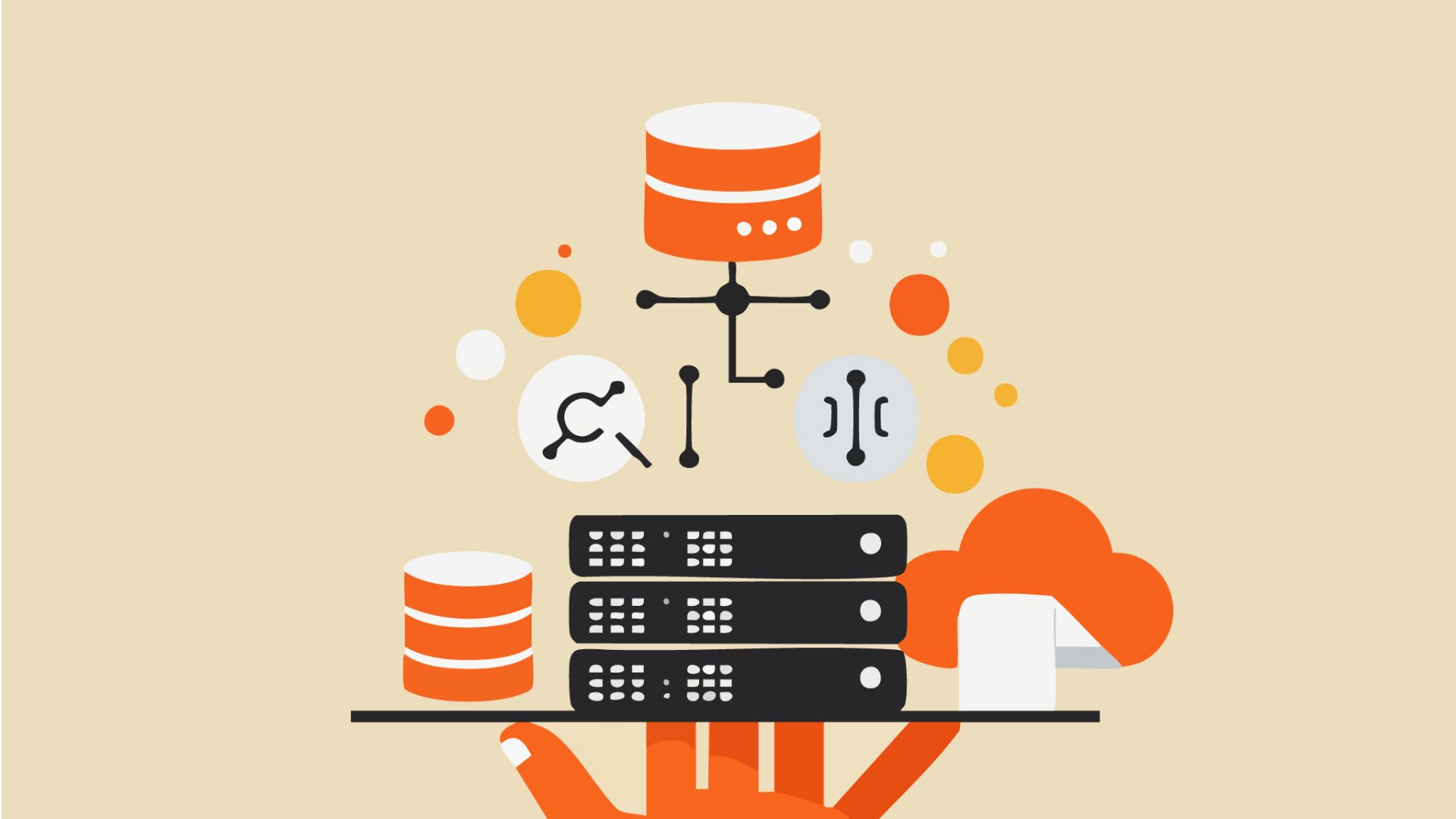
On-Premise vs Cloud: Choose the Right Infrastructure for Your Business
READ MORE >>
Boost Resilience with Hybrid Cloud Disaster Recovery That Works Fast
READ MORE >>
How to Choose the Right Cloud Provider Without Wasting Time or Money
READ MORE >>
Boost Performance & Cut Costs with Right Sizing in Cloud Computing
READ MORE >>Follow Us for More IT Transformation Insights

Watch a Demo Now
See how Visual One enables cloud cost management & optimization – in conjunction with fully consolidated storage and virtualization monitoring.


